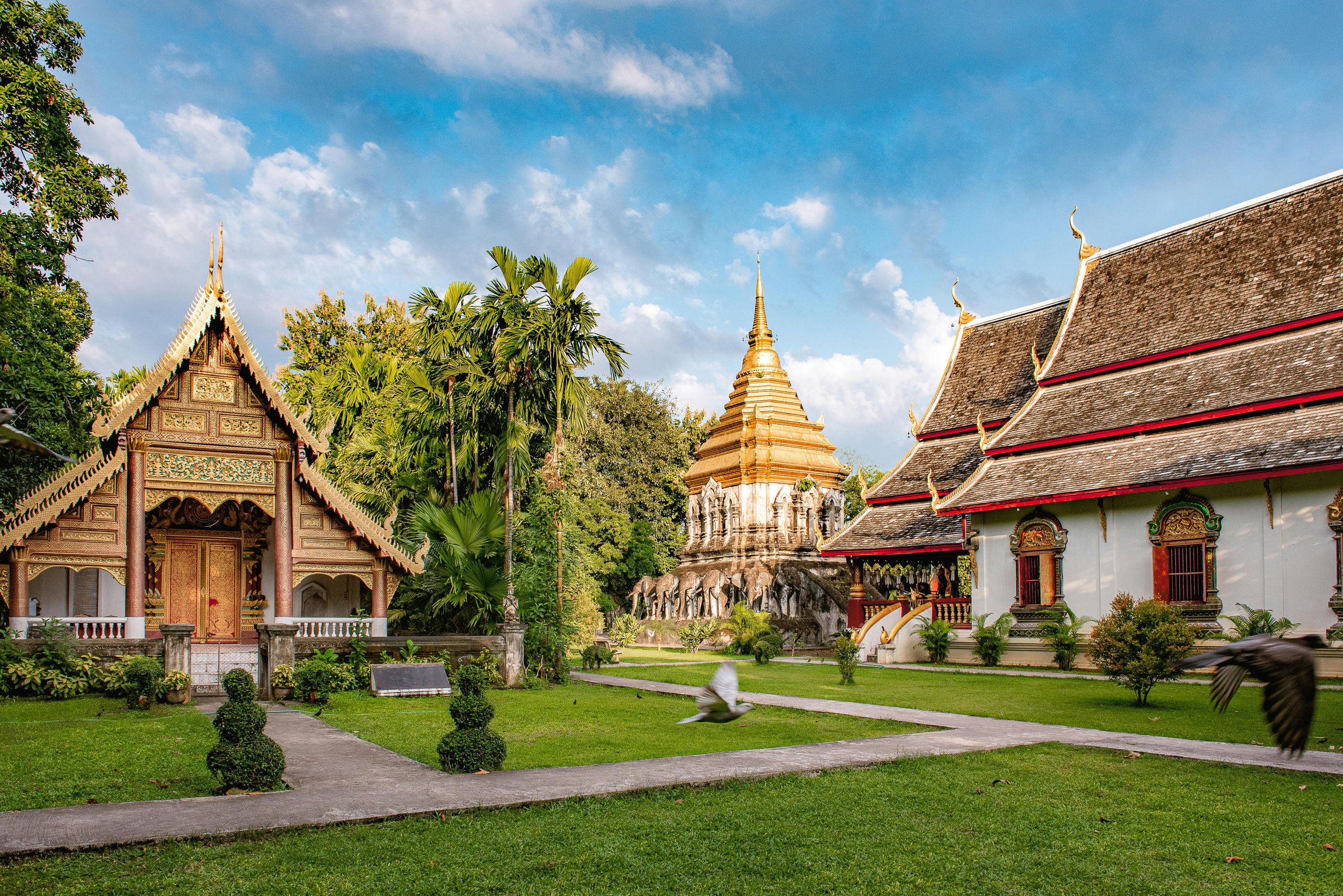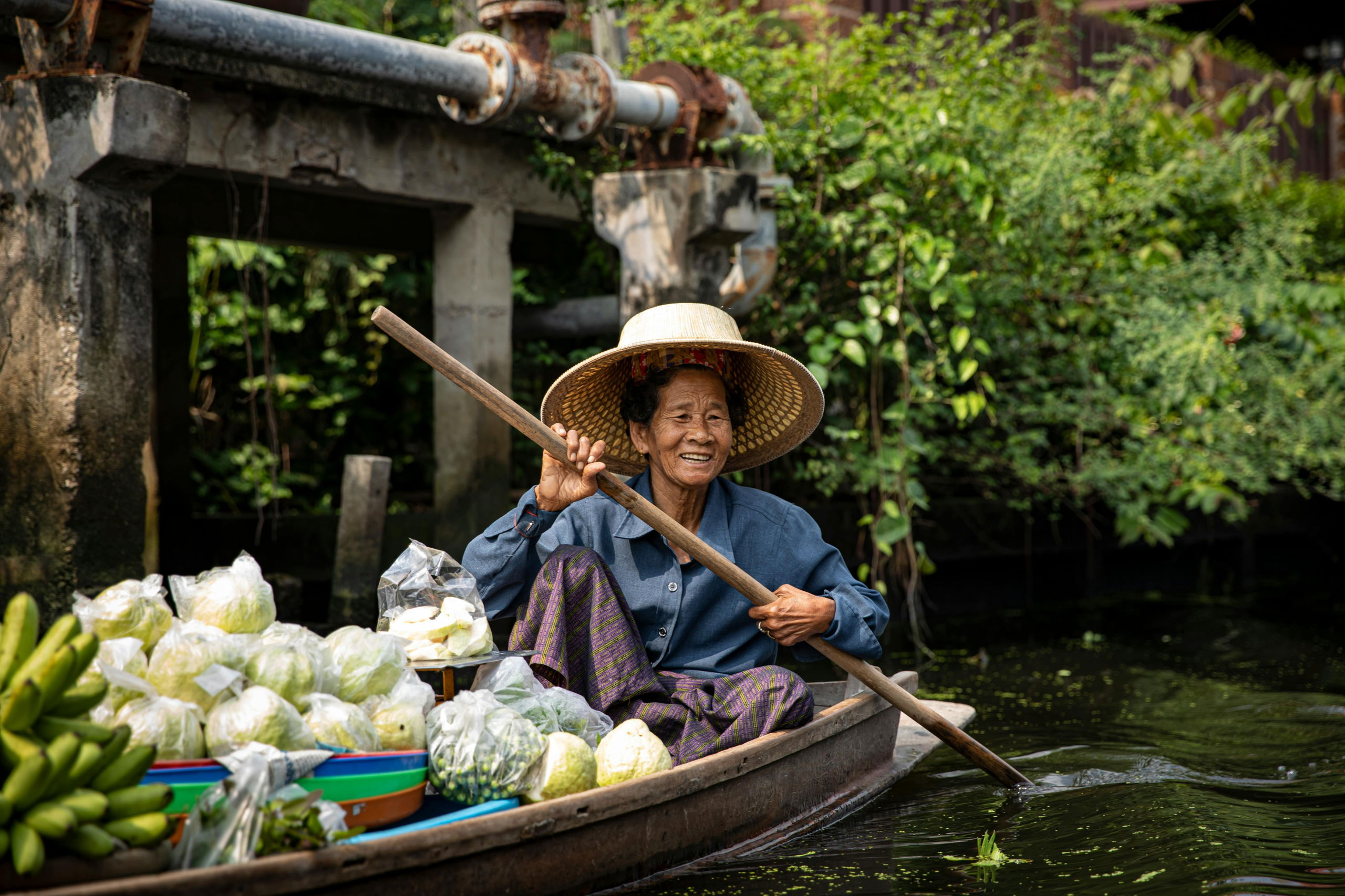
Introducing Our Newest Destination: Thailand
Our newest itinerary is designed for travelers who want to experience this story firsthand. From Bangkok’s glittering palaces and bustling night markets to Chiang Mai’s serene mountain landscapes and deeply rooted food traditions, the journey captures the contrasts that make Thailand unforgettable. What makes it extraordinary, though, is the company: three acclaimed chefs—Earl Ninsom, Angel Barreto, and Avishar Barua—who bring their own expertise, backgrounds, and personal connections to Thai cuisine.
Thailand is a country of balance: fiery spice cooled by fresh herbs, gilded temples standing beside lively markets, serenity found within chaos. Its cuisine is as layered as its culture, shaped by centuries of trade, migration, and devotion to the idea that every meal should awaken all the senses. To travel here is to step into a living story, told through dishes that balance sweet, salty, sour, bitter, and heat with remarkable precision.
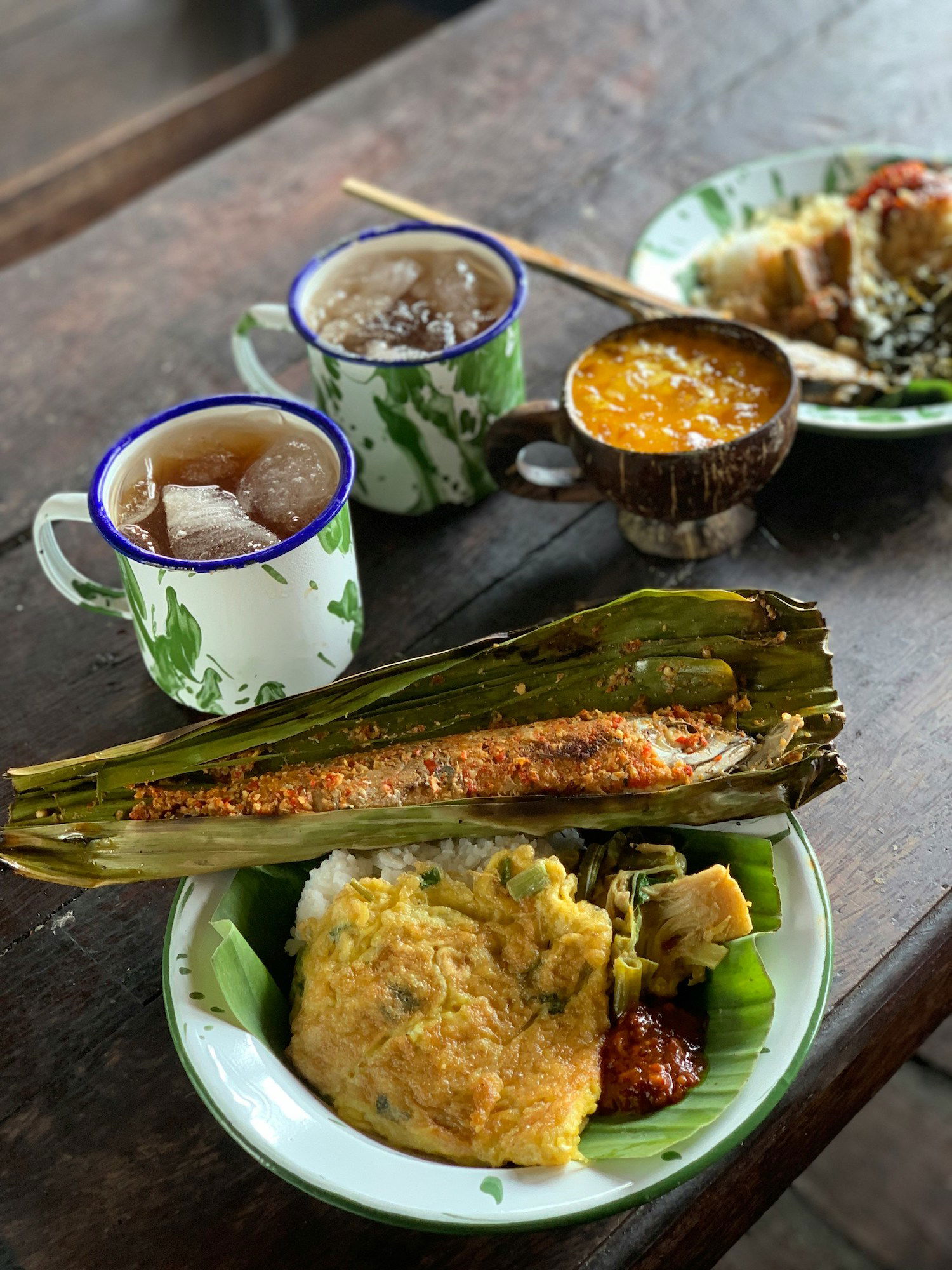
Why Thai Cuisine Matters
Thai food is globally beloved, yet often misunderstood. Pad Thai, green curry, and mango sticky rice represent only a fraction of a complex culinary tradition shaped by geography, history, and belief. In the coastal south, dishes feature coconut milk, turmeric, and seafood, reflecting both the tropical climate and the influence of neighboring Malaysia. The north is known for its herbal sausages, hearty curries, and sticky rice—foods that speak to cooler mountain climates and Lanna heritage. Central Thailand, home to Bangkok, combines royal court sophistication with humble street food ingenuity, while the northeast (Isaan) embraces fiery, sour dishes like som tam papaya salad, often enjoyed with sticky rice and grilled meats.
Food in Thailand is communal and symbolic: a meal is never just sustenance but a reflection of harmony, generosity, and shared joy. To travel here with guides deeply embedded in its food culture is to see beyond menus—to understand the “why” behind the flavors.
Meet the Tastemakers
Each chef joining us our a Thailand tour brings a different dimension, but together they all offer something rare: an insider’s journey into Thai food, filtered through personal histories, cultural ties, and professional expertise.

Earl Ninsom
A James Beard Award–winning chef and restaurateur, Earl Ninsom has been called one of America’s leading voices in Thai cuisine. His Portland restaurants. including Langbaan and Eem. pay homage to his Thai upbringing while pushing creative boundaries. On this journey, Earl shares stories of his childhood, insights into traditional recipes, and his vision for how Thai cuisine continues to evolve globally.

Angel Barreto
Chef-owner of Washington D.C.’s celebrated Anju, Angel Barreto is known for his mastery of Korean cuisine, but his passion for Asian flavors extends far wider. His travels and training have given him a deep appreciation for Thai culinary traditions, which he interprets through a lens of innovation and respect. Guests traveling with Angel can expect thoughtful connections between Thai flavors and broader Asian influences.
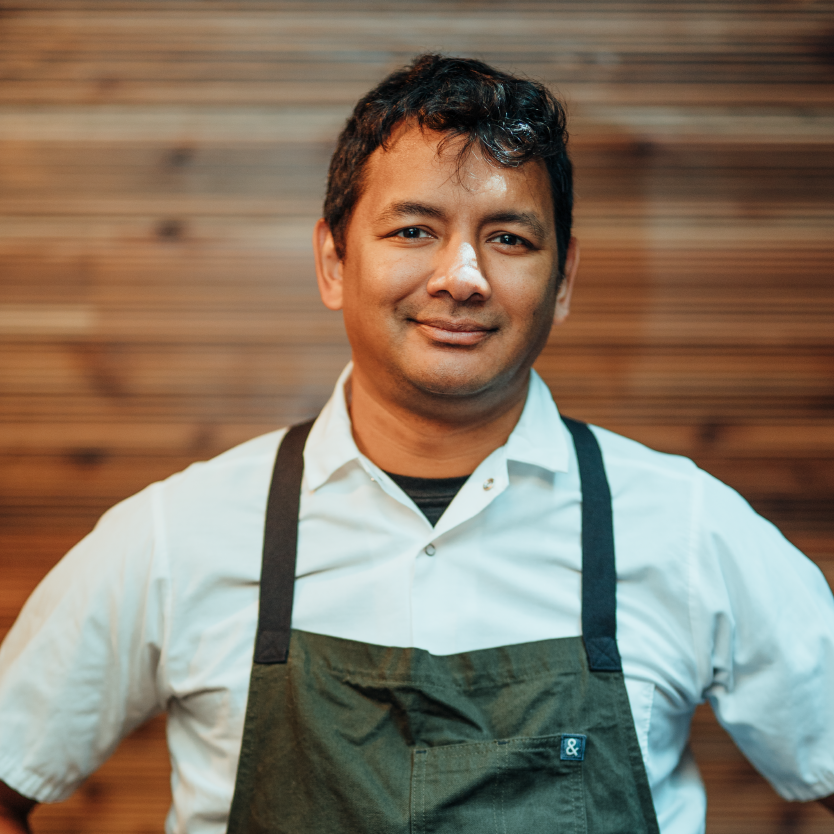
Avishar Barua
Born in Ohio to Bangladeshi parents, Avishar Barua has built a reputation for creating food that’s playful, rooted in tradition yet full of surprise. His restaurant Agni is known for its “fun dining” ethos of serious cooking without pretension. With a love for storytelling and humor, Avishar guides travelers through Thailand’s markets and kitchens with warmth, weaving historical context with modern culinary perspectives.
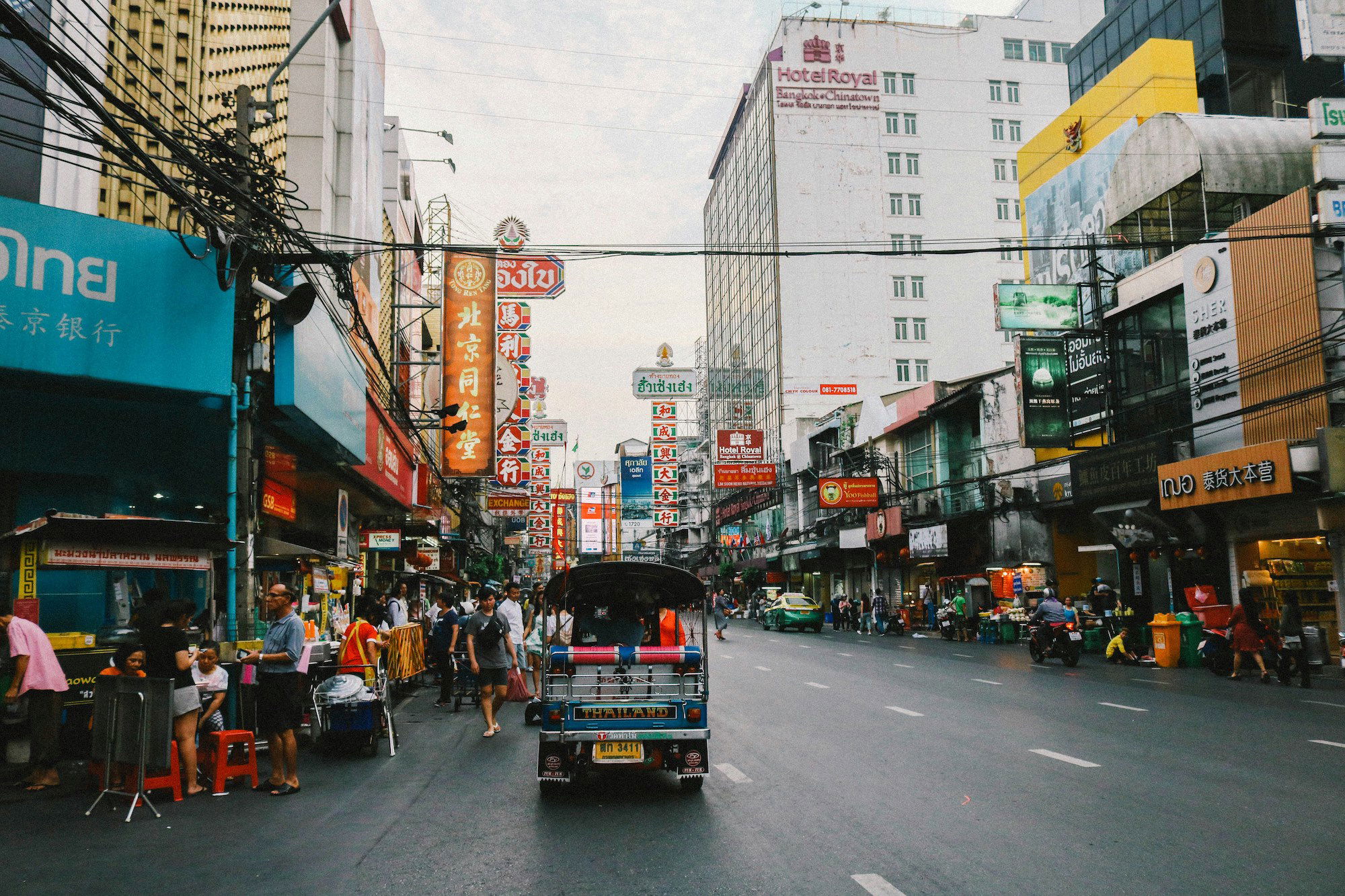
Our Thailand Itinerary
Each day of this Thailand itinerary is designed to reveal another layer of Thailand’s story. From the first stirrings of Bangkok’s morning markets to the quiet mountain temples of Chiang Mai, the itinerary flows with the rhythm of the country itself—dynamic yet unhurried, rooted in tradition yet alive with discovery. Guided by chefs who know these flavors intimately, travelers move through the country not as spectators, but as welcomed guests at the table.
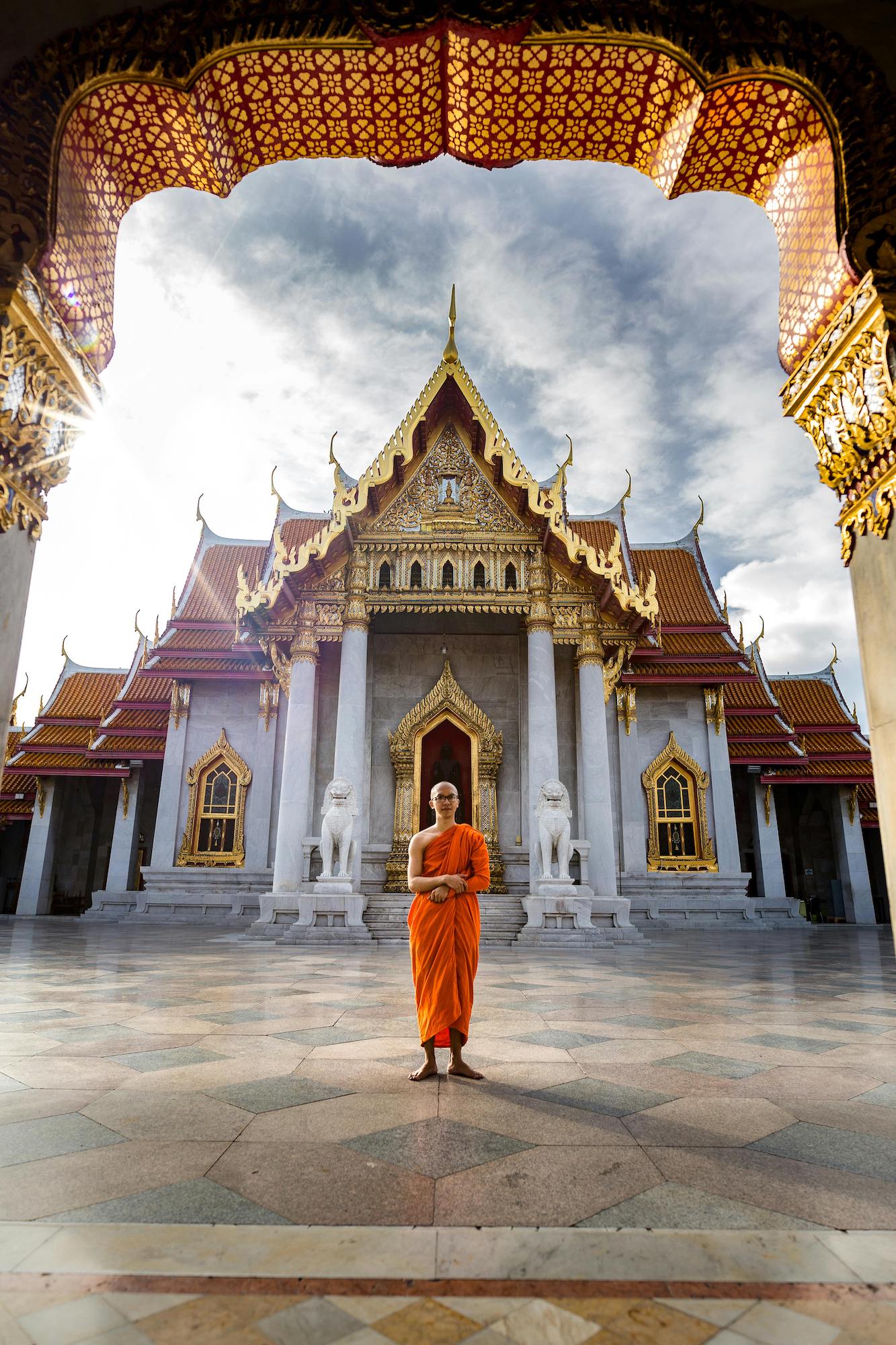
Days 1–3: Bangkok’s Energy and Elegance
Bangkok is a city that never sits still. The days begin early, with monks in saffron robes collecting morning alms, and stretch long into the night as markets buzz under fluorescent lights. Travel through Bangkok is not rushed—it’s intentional, allowing travelers to pause in shaded courtyards, sip iced cha yen (Thai milk tea), and absorb the rhythm of daily life. For travelers, it’s a city of sensory immersion.
- Markets & Street Food: Guests dive into Bangkok’s legendary food scene through tuk tuk market tours led by our hosts. In Talad Noi, a riverside neighborhood with centuries-old Chinese shrines, stalls serve aromatic duck noodle soups and sizzling stir-fries. The scent of grilled pork skewers mingles with incense drifting from shrines, creating a sensory tapestry unique to Thailand’s capital.
- Royal & Historic Bangkok: Beyond food, Bangkok reveals its cultural depth in places like the Grand Palace, with its golden spires and emerald Buddha, or Wat Pho, home to the Reclining Buddha and a revered school of Thai massage. Here, spirituality and artistry coexist, echoing the cultural layers found in the cuisine.
- Evening Dining Experiences: Dinner is not simply a meal but a curated journey. Some evenings feature Michelin-recognized street vendors, whose crab omelets and pad krapow stir-fries attract lines of locals. Others bring guests to private dining rooms where modern chefs reinterpret classics, creating dishes that are both familiar and revelatory.
Days 4–7: Chiang Mai’s Mountains and Markets
Moving north, the itinerary shifts from the capital’s intensity to the slower pace of Chiang Mai. The city is a tapestry of Lanna heritage, Buddhist spirituality, and thriving artisanal culture.
- Cultural Landmarks: Chiang Mai is defined by its temples, and visits here reveal both history and devotion. Wat Phra Singh glows with intricate murals, while Wat Chedi Luang rises in weathered brick, a testament to the city’s centuries-old role as a spiritual center.
- Northern Thai Cuisine: The food here differs markedly from Bangkok. Guests sample sai ua (herbal pork sausage), nam prik noom (a smoky green chili dip), and khao soi—a coconut curry noodle soup that epitomizes the balance of richness and spice. Cooking classes and home visits reveal not only how these dishes are made, but the traditions that sustain them.
- Markets & Agriculture: Market tours highlight seasonal ingredients: wild mushrooms after the rains, bamboo shoots in spring, and handwoven baskets filled with sticky rice. In the surrounding hills, travelers may witness tea harvesting, learning how local farmers maintain traditions while adapting to modern trade.
- Special Experiences: Some departures include a visit to an elephant sanctuary, where travelers engage with conservation efforts focused on ethical care. Others highlight artisanal crafts or additional culinary workshops, underscoring the richness of the region.
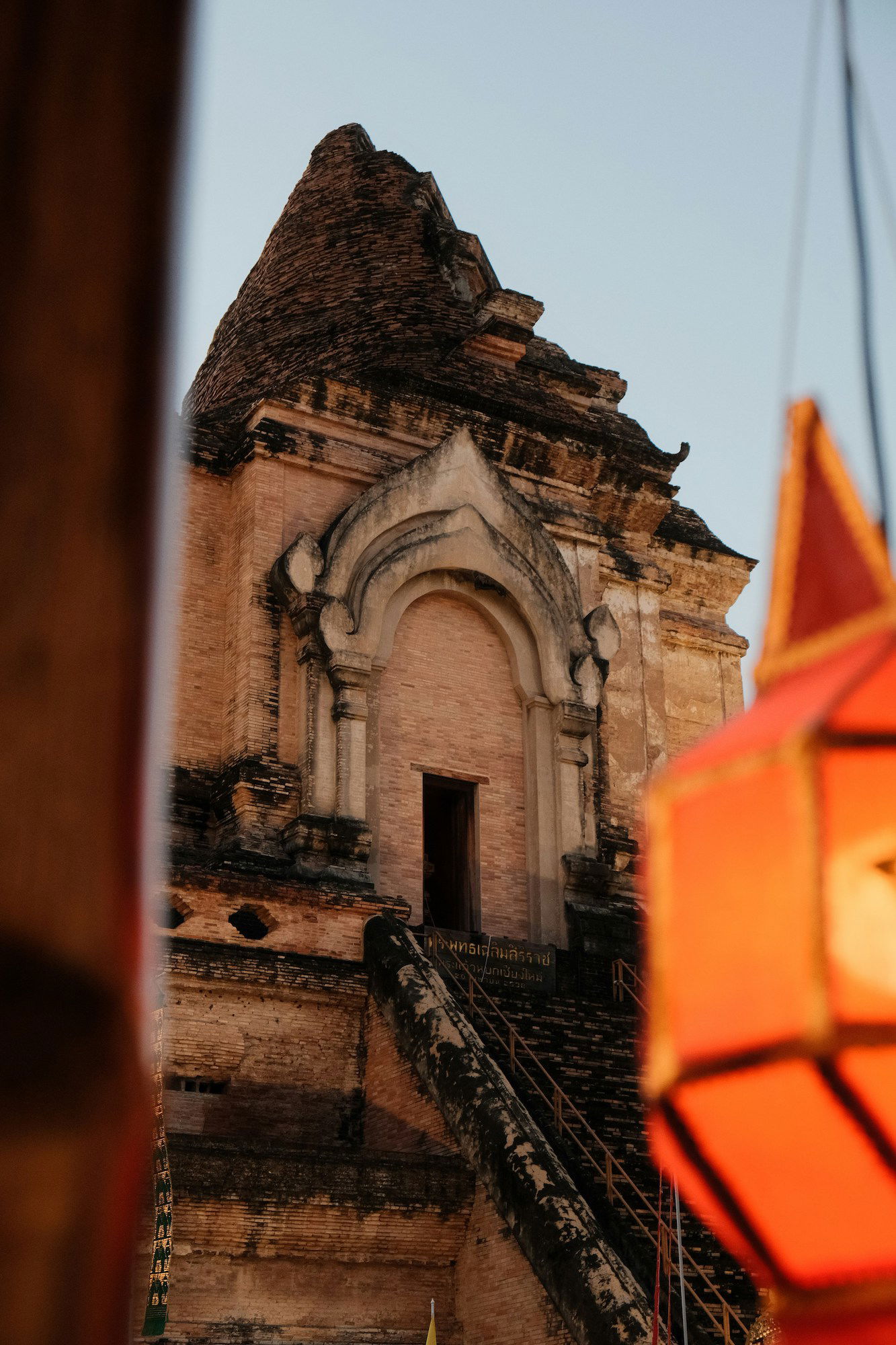
Why This Journey Matters
Unlike tours that skim Thailand’s surface, this itinerary is a deep dive into its culinary and cultural core. Traveling with chefs who carry personal ties to Thai flavors means that every market stroll and tasting carries context: why a certain herb matters, how a dish evolved, what memories it evokes.
By moving intentionally—from Bangkok’s bustling avenues to Chiang Mai’s mountain calm—travelers witness the contrasts that define Thailand while savoring its common threads: hospitality, flavor, and a reverence for balance.
Book your Thailand adventure today, and discover a journey where every bite tells a story.
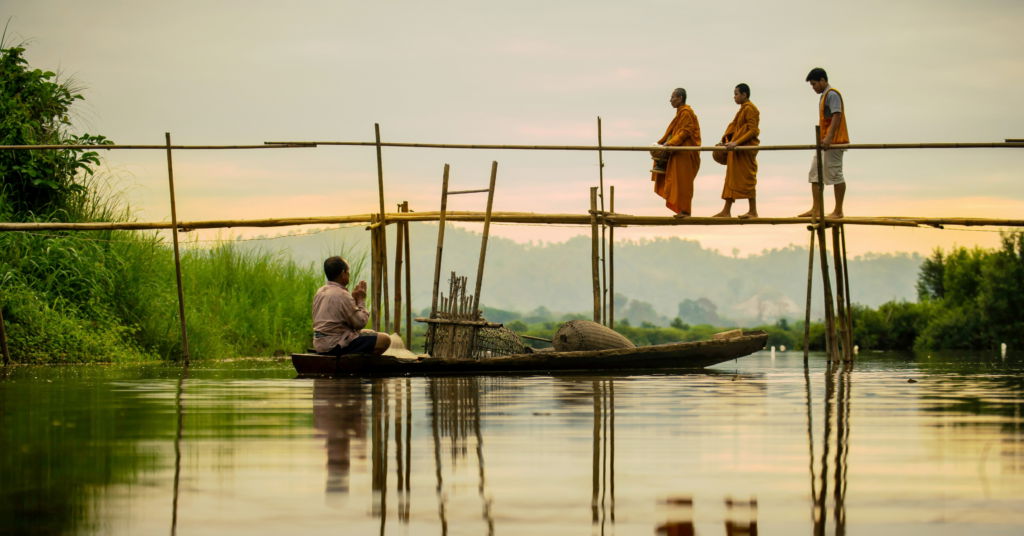
Thailand Tour with Earl Ninsom
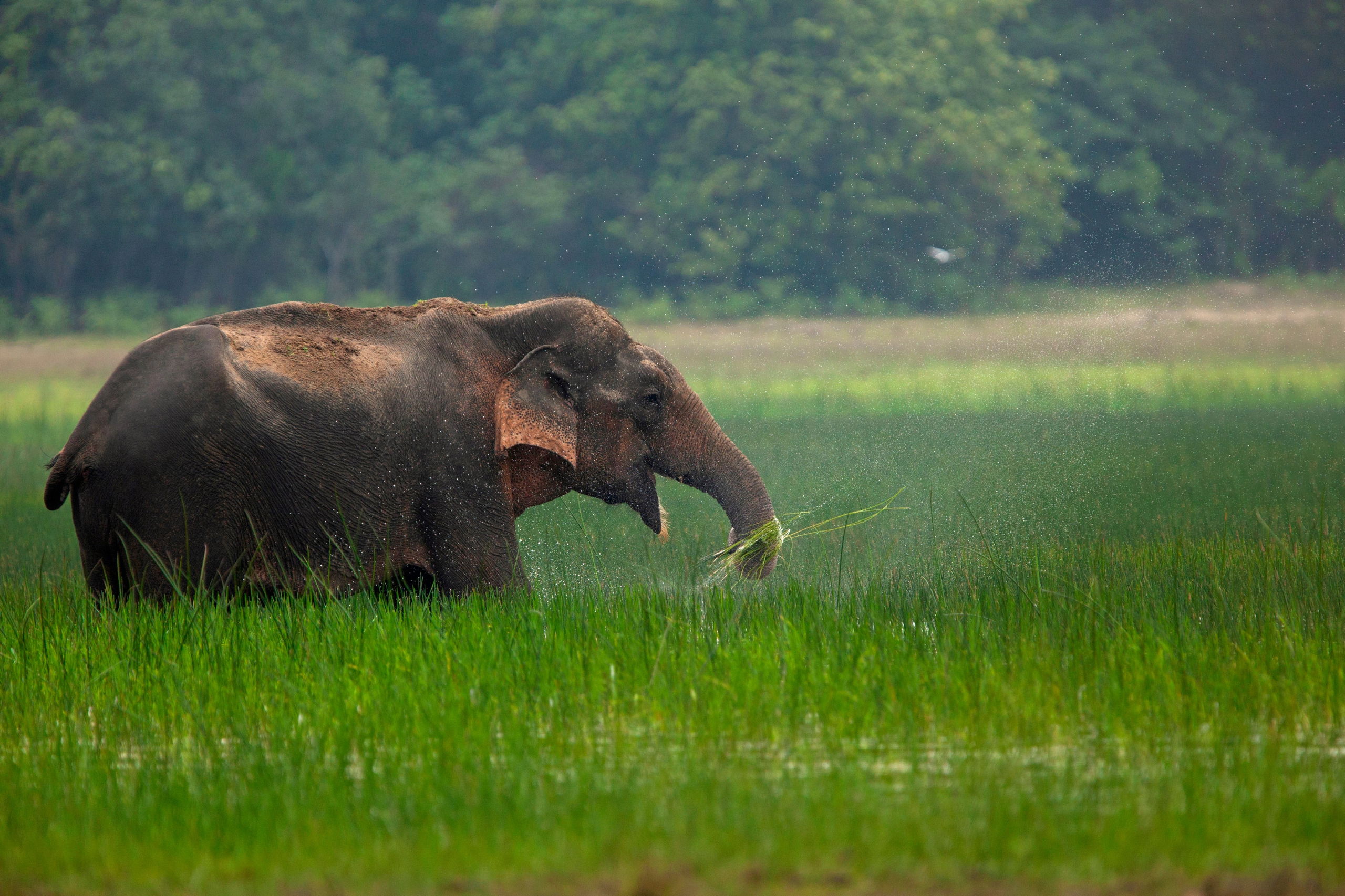
Thailand Tour with Angel Barreto
